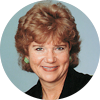Are you aware that 80 percent of the world's population1 believes as we do in the existence of a universal intelligence? Other cultures and systems refer to it as ki, qui, prana, mana, vital energy, natural law and divine mind. This same 80 percent of the world's population depends on these so-called "alternative approaches" for their primary health care.
America is a country of immigrants. Many of these immigrants are now our senior citizens. They have brought with them health beliefs and behaviors from various traditional systems of healing. While the degree of their American acculturation varies considerably, these older adults have not divorced themselves from beliefs learned earlier. They have merely incorporated biomedicine into their beliefs about health and healing.
Aging studies concur that musculoskeletal symptoms dominate the complaints of America's middle-aged and older adults for both men and women.2 We have all seen the benefits chiropractic care affords the patient with musculoskeletal complaints. Function is regained and health maintained; in short, lives are changed!
The traditional medical approach of prescribing pharmaceuticals continues to be highly scrutinized, with numerous reports of inappropriate prescriptions leading to adverse drug reactions and overmedicated patients.3 It was the success of the miracle drugs for treatment of acute infections that propelled biomedicine to its pinnacle. Ironically, it is the failure of pharmaceuticals to address chronic conditions that has knocked it from its pedestal. Yet, the medical profession is not standing still. They are acknowledging with each new research report that other avenues of approach to health are desirable and warranted.
At present, a massive paradigm shift on the American health care scene is working away from reductionist biomedical principles and heading right towards alternative care. Why? There are several reasons for this shift. A massive aging population is living longer with multiple chronic conditions; health care costs have skyrocketed; there has been an increasing number of pharmaceutical "misadventures" prompting individuals to seek other alternatives; and lastly, there is a massive consumer movement towards reclaiming power and control over one's personal health.
The result? The pendulum has paused and is now gaining momentum the other way. Researchers tout the benefits of combining a healthy diet and exercise to reverse the effects of heart disease4 and to prevent 30%-40% of all cancers.5 An estimated 60 million Americans are turning to herbal remedies and supplements6 well researched and commonly used in Europe, but not as well known in America.7 Professional journals are publishing reports on the effectiveness of homeopathic remedies,8 and mainstream scientists tout the benefits of meditation,9 acupuncture10 and other forms of alternative healing. Andrew Weil, MD, from the University of Arizona's College of Medicine in Tucson, has founded a new program in "integrative medicine" to train future doctors in a philosophy that merges the best that alternative therapies and conventional medicine have to offer.11 The Hayflick theory has been revised. Human cells don't stop at 70 replications as was previously thought; they can go on indefinitely.12
It really is much easier to ride the horse in the direction it is going! We are there. The power of the adjustment is formidable indeed, and so is the power of a doctor-teacher who educates his patients-students over the course of their lives. Let us be aware of the tremendous interest our patients have in learning about all the options available to them for the maintenance of their health. Give them something new to read or think about on each visit. Now, more than ever, we must keep abreast of new findings. We and our patients have much to gain!
References
- Koop CE. In: Micozzi M. (ed). Fundamentals of Complementary and Alternative Medicine. New York: Churchill Livingstone, 1996, p. x.
- Verbrugge L. Gender, aging and health. In: Markides K. (ed). Aging and Health: Perspectives on Gender, Race Ethnicity, and Class. Newbury Park, CA: Sage, 1989, pp. 23-78.
- Eiser P. Report: more drug rules needed in nursing homes. USA Today November 17, 1997, pp. A1, A3.
- Friend T. Ornish program is proven to reduce heart disease, its cost. USA Today February 12, 1997, p. A1.
- Hellmich N. Fighting cancer: diet and exercise. USA Today October 1, 1997, p. D1.
- Hellmich N. More doctors dabbling in herb sales. USA Today November 25, 1997, p. 7D.
- Hellmich N. Herbal remedies under the microscope: USA launches studies, reviews foreign data. USA Today November 25, 1997, p. 6D.
- Homeopathy's effectiveness is more than placebo. Dynamic Chiropractic December 1, 1997, p. 1.
- Elias M. A mind for health: clearer link between the head and healing. USA Today March 31, 1997, pp. D1-2.
- Sternberg S. Mainstream US science endorses acupuncture. USA Today November 6, 1997, p. D2.
- Morrison J. Balance of nature. Southwest Airlines Spirit January 1998, p. 44-47, 74.
- Recer P. Science closes in on fountain of youth. Daily Inter Lake January 14, 1998, pp. A1, A3.
Barbara Zapotocky, DC
Lakeside, Montana
jzap-netrix.net
Click here for previous articles by Barbara Zapotocky-Cook, DC.





